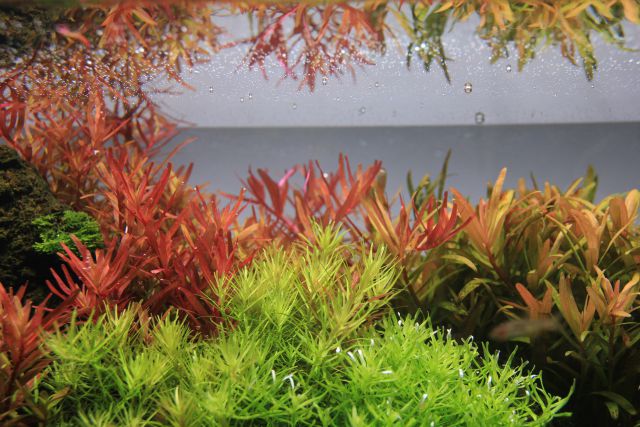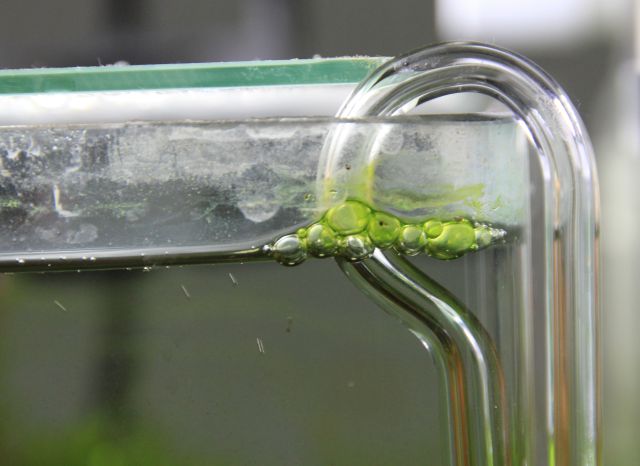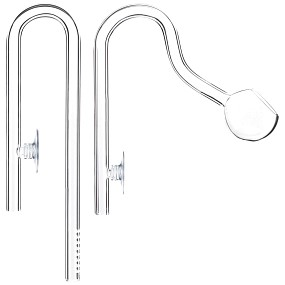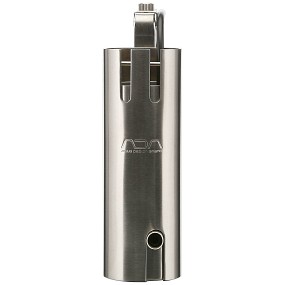Surface scum is generally known as a visible film of micro organisms, forming on the surface of liquids but also solids as e.g. stones. This biofilm is often found on the water surface of aquariums. This is a special environment because it is basically a boundary layer between the air and water habitats. Many microorganisms such as yeasts, oxygen-dependent bacteria and algae prefer this transition zone, because the living conditions there are particularly good for them. Airborne dust particles add to the formation of surface scum as well, as they can not sink due to the water’s surface tension. The water surface’s underside on the other hand is a gathering point for all substances lighter than water but unable to escape into the air.
Many aquarists regard surface scum as nasty to look at, furthermore it hampers the gaseous exchange between water and ambient air. In parts, gases can’t escape anymore and little bubbles get stuck right underneath the water surface. Thick surface scum can also reduce the incidence of light.

Oxygen bubbles produced by the aquatic plants get stuck underneath a mild layer of scum.
Types of scum
In principle, surface scum always consists of various microorganisms. Depending on which conditions are at hand, certain types may be predominant, like blue-green algae or certain bacteria.
Algae
Scum that’s made of mostly algae can be identified pretty well by its greenish colour. If the gaseous exchange is hampered, bigger bubbles form at the surface which can’t escape. Again, it is easy to see in the green edges of the bubbles that it is algae.

Algae can form surface scum.
Bacteria
Bacterial biofilms on the surface are usually silvery-white in appearance. When touched, the scum will fall apart into smaller pieces. Some of them are so-called iron bacteria, which oxidize dissolved iron and extract energy from it.

A bacterial scum, falling to pieces due to flow.
But also oily-looking films check out as “surface scum”. After e.g. poking your finger into it, the scum will close up again immediately and often consists of proteins, fats and the bacteria feeding on the two previously mentioned substances..
Causes
Especially in planted tanks with a rich population of fish, a too high organic pollution might be the cause of the formation of bacterial surface scum. If there is a higher supply in nutrition in the form of organic foodstuffs, a correspondingly higher bacterial population will emerge and show itself as surface scum. Low-quality food and overfeeding enrich the aquarium with proteins and fats which will cause above all oily surface films. A reduction of the food supply or thinning out the greenery will minder the introduction of organic substance into the system and thus the formation of surface scum.
Mild biofilms made of iron bacteria may form in planted aquariums. A reduction or replacement of the iron fertilizer may be of help. An excessive use of Easy Carbo, during a treatment, can cause an increase in bacterial population and consequently surface scum.
To get rid of surface scum, fighting the cause is essential, but may not always lead to a directly perceptible result. In the following we will present you a couple of methods.
Countermeasures
Removing the scum manually with the help of kitchen paper has proven itself as a useful measure. The kitchen paper is placed on the entirety of the water surface, and removed when it is completely soaked. The scum’s biofilms can be removed pretty well doing that, bigger particles like dust or plant clippings remain in the water, though.
Often it might be of help, to increase the flow at the water surface. This tears up biofilms and prevents them from forming coherent carpets. For this you can install the outflow a little higher or you switch to a Lily Pipe, which is oriented more upwards by design.

The Aquasabi Bubble outflow increases surface movement.
But of course there are also creatures that eat biofilms off the surface. This includes the popular freshwater snail (Physidae). A systematic deployment of algivores doesn’t have much of an effect on the reduction of surface scum, though.
Surface skimmer
Skimmers are predestined for a constantly clean and scum-free surface. When using an external filter, matching inflows with integrated skimmers are available for all common hose diameters. To meet the ambition of creating aesthetically pleasing aquascapes, we offer skimmers made of glass or stainless steel as basic components.
Aqua Rebell Skimmer made of glass or solid steel.
The skimmer can siphon off the water via the float gauge (the so-called swimmer) as well as with a filter inflow which is located underwater. Via use of a rod or screw, the parts of the skimmer through which the water is sucked away can be adjusted continuously. It should be kept in mind, though, that this type of surface cleaning requires a certain minimum pump capacity of the external filter. This is noted in the item description accordingly. Otherwise, it may happen, that the system is just too weak to suck any water through the swimmer.
Especially when skimmers are in continuous use, one should take into account that CO2 is driven out by the continuous surface movement. Therefore carbon fertilization should be adapted accordingly.
Who prefers to keep his filter tech untouched, should consider a standalone skimmer. The Azoo Skim 250 or Vuppa-I by ADA are small, independent filters with integrated surface skimmers.

Due to their small size, they are perceived as being not too obstructive in larger tanks. They can even be used as solitary filter in nano aquariums. Another benefit of this approach is, that you have a possibility to activate the skimmer only at certain times using a time switch. This reduces CO2 expulsion and also saves electricity.